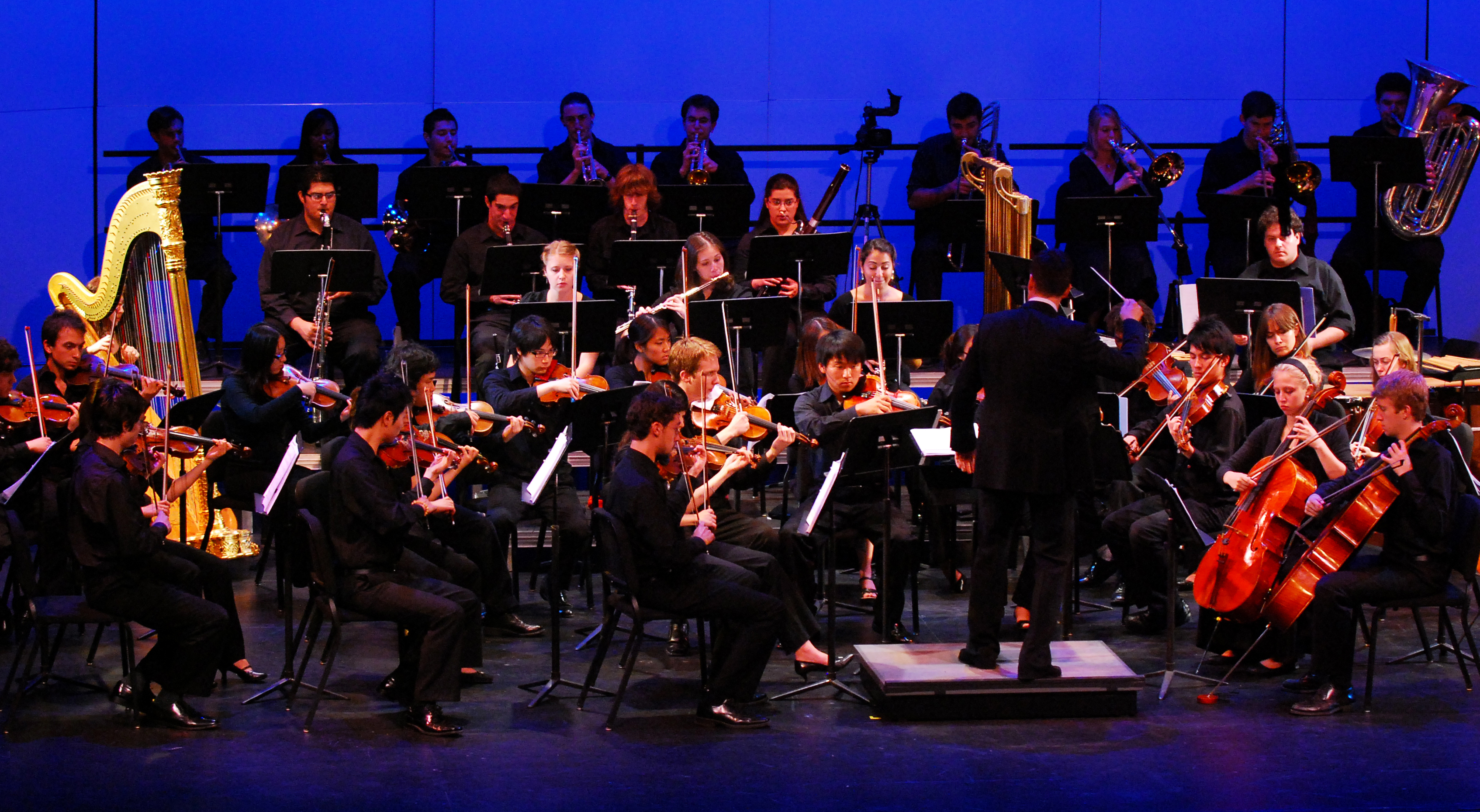UCLA Philharmonia Orchestra was founded in 1936, in the midst of the Great Depression. Now, 74 years later, it is poised to open another season of performances with its first concert of the year today at 8 p.m. in Schoenberg Hall.
Critically acclaimed Professor Neal Stulberg is returning for his sixth year as conductor of the Philharmonia.
“This group is composed of tremendously talented musicians who have not only skill, but also commitment and enthusiasm,” Stulberg said. “It is a pleasure to work with young musicians of this caliber.”
The orchestral concert will be preceded by a 7 p.m. performance by first violinist and concertmaster Ji-Young An , a first-year music doctoral student, and Kanae Matsumoto, a faculty piano accompanist.
The duo will be playing French composer Cesar Franck’s “Sonata for Violin and Piano,” one of the most performed Romantic-era violin pieces.
In addition, the two will play “Tzigane,” by French composer Maurice Ravel, a Gypsy-influenced 10-minute rhapsody featuring a complex violin solo.
An said she hopes to perform in a manner that communicates her feelings of comfort with music to the audience.
“The violin has always been like my home; I’ve played it from a young age,” An said. “It’s a great way to express myself and my feelings about music. It’s like a language to me.”
Philharmonia will be playing two pieces: “Images pour Orchestre” by French composer Claude Debussy and “Symphony No. 2 in D Major, Op. 43″ by Finnish composer Jean Sibelius.
“The orchestra itself is the star of the show,” Stulberg said, in reference to the orchestra’s ability to play the complex music. “Both pieces are extremely colorful, virtuosic favorites for orchestra. I wanted to give our musicians the chance to sink their teeth into this exciting music.”
The Debussy piece has three movements, each of which, according to Stulberg, portrays music and scenes from different countries. The first movement, “Gigues,” depicts a chilly British landscape. The second movement, “Iberia,” conveys a bright festival day in Spain. The third movement, “Rondes de Printemps,” portrays a whimsical, floating dance in Debussy’s native France.
“Of the two pieces, I prefer the Debussy,” said David Goodman, a second-year music and political science student and tympani player for Philharmonia. “It truly is an amazing piece that is able to paint a picture of a landscape with the flavors of the music.”
The Sibelius piece stands in stark contrast to Debussy’s. According to Stulberg, “Symphony No. 2 in D Major” explores the relationship between humans and nature by examining the depth of human emotion and the power of elements.
“The mood in the Sibelius piece shifts from moody, to gloomy, to triumphant, but is always rich and powerful,” Stulberg said. “By the end, the audience feels as if they have completed a long and satisfying journey.”
With an average of three performances a quarter and weekly practices on Tuesdays and Thursdays, the members of Philharmonia have fostered a close camaraderie.
Creating an intimate and collaborative sound has instilled in the musicians a sense of trust and a shared notion of responsibility to one another.
“Essentially, we are all performers who work together to create something bigger than ourselves,” Goodman said.
Some members of Philharmonia alluded to the excitement and anticipation that accompanies the first performance of the year. Though the orchestra was on the tight, short schedule typical of preparation for each year’s first show, it looks forward to the audience’s response to its opener.
“Opening night is always exciting,” Stulberg said. “If any students have never experienced the sound and power of symphony orchestra, this is an ideal opportunity to experience it.”
